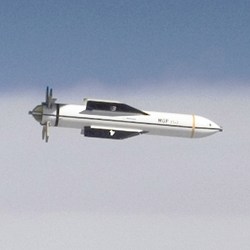The recent use of the GBU-57 during U.S. strikes on Iranian nuclear facilities on June 22, 2025, brought renewed attention to this colossal weapon and its role in modern warfare.
💣 GBU-57 Massive Ordnance Penetrator (MOP): The Ultimate Bunker Buster

The GBU-57 Massive Ordnance Penetrator (MOP) is the United States’ most powerful conventional bomb designed to target and destroy deeply buried and fortified structures. Weighing over 27,000 pounds and carried exclusively by the stealthy B-2 Spirit strategic bomber, this weapon stands as the ultimate tool for eliminating high-value underground targets. The recent use of the GBU-57 during U.S. strikes on Iranian nuclear facilities on June 22, 2025, brought renewed attention to this colossal weapon and its role in modern warfare.
⚙️ GBU-57 MOP: Overview and Design
The GBU-57A/B, commonly known as the Massive Ordnance Penetrator (MOP), is a 27,125-pound (12,304 kg) precision-guided bomb developed by Boeing for the U.S. Air Force. It measures 20.5 feet (6.2 meters) in length and is fitted with an integrated GPS/INS guidance system. Built around the BLU-127 bomb body, it’s a high-penetration, low-collateral damage solution specifically created to counter deeply entrenched enemy bunkers, command centers, and nuclear development facilities.
Key Specifications:
- Weight: 27,125 lbs (12,304 kg)
- Length: 20.5 ft (6.2 m)
- Guidance: GPS-aided Inertial Navigation System (INS)
- Warhead: High Explosive Penetrator
- Delivery Platform: Northrop Grumman B-2 Spirit stealth bomber
- Penetration Capability: Estimated to penetrate up to 200 feet (61 meters) of 5,000 psi reinforced concrete or 130 feet of rocky soil
🛠️ Development History
The GBU-57 was first conceptualized in the early 2000s amid rising concerns over nuclear proliferation and the increasing sophistication of underground bunker systems, particularly in Iran and North Korea. Traditional bunker-busting bombs like the GBU-28 and GBU-37, each weighing around 5,000 pounds, were no longer adequate for newer, deeper targets.
In response, Boeing was awarded a contract by the Defense Threat Reduction Agency (DTRA) to develop a more formidable weapon. By 2012, the GBU-57 was declared operational, with the B-2 bomber modified to carry two of these massive munitions in its internal bomb bay.
As of November 2015, at least 20 GBU-57 bombs had been delivered to the U.S. Air Force, though no new deliveries have been publicly confirmed since.
🛩️ Deployment Platform: The B-2 Spirit
Due to its size, weight, and stealth delivery requirement, the only aircraft capable of carrying the GBU-57 is the Northrop Grumman B-2 Spirit, America’s long-range stealth bomber. The B-2’s low radar signature and ability to fly deep into enemy territory make it the perfect platform for deploying a weapon like the MOP without alerting enemy defenses.
In combat, a B-2 can carry two MOPs simultaneously, thanks to modifications made to its bomb bay and targeting systems.
⚔️ First Combat Use: Iran, 2025
The GBU-57 saw its first confirmed combat use on June 22, 2025, when the United States Air Force launched a coordinated strike against Iranian nuclear sites. In the operation:
- 7 B-2 bombers dropped 14 GBU-57 bombs
- Primary targets: Fordow Uranium Enrichment Plant and the Natanz Nuclear Facility
The strikes were part of a broader strategic objective to delay or dismantle Iran’s nuclear program. Satellite imagery and post-strike assessments confirmed the destruction of multiple underground chambers, centrifuge halls, and command bunkers—demonstrating the GBU-57’s devastating effectiveness.
🧨 How the GBU-57 Works
The MOP is a kinetic penetration weapon, relying on its massive weight and hardened steel casing to burrow deep into the earth before detonating. Unlike thermobaric or cluster munitions, the GBU-57 is designed for precise, deep strikes with minimal surface-level collateral damage.
Strike Process:
- Release: Dropped from high altitude via B-2 bomber
- Guidance: GPS and INS guide it to the exact target
- Penetration: Travels through concrete, soil, or rock
- Detonation: Explodes deep underground for maximum effect on hardened facilities
🌍 Strategic Importance
Nuclear Deterrence and Counter-Proliferation
The GBU-57 plays a vital role in the U.S. military’s toolkit for deterring nuclear proliferation and neutralizing underground WMD facilities. Its mere existence acts as a deterrent to adversaries seeking to build hidden nuclear programs.
Psychological and Tactical Impact
The MOP sends a clear message of U.S. technological superiority and strategic reach. Its ability to strike anywhere in the world—stealthily and with devastating accuracy—adds psychological pressure in geopolitical negotiations.
🔍 SEO Keywords:
GBU-57 MOP, Massive Ordnance Penetrator, Bunker buster bomb, U.S. Air Force bombs, Boeing MOP, B-2 Spirit bomb, Iranian nuclear strike 2025, GBU-57 specs, bunker buster capabilities, MOP vs GBU-28, Fordow bombing 2025
📝 Final Thoughts
The GBU-57 Massive Ordnance Penetrator stands as a symbol of American military engineering and strategic power. In an era where adversaries are increasingly fortifying their assets underground, the MOP offers a reliable and devastating countermeasure. Its successful use during the 2025 strikes on Iranian nuclear facilities marks a new chapter in precision strike warfare—one where no bunker is truly safe.
As global tensions rise and underground infrastructure becomes more prevalent in modern military strategy, the GBU-57 will likely remain a critical asset in the U.S. defense arsenal.
Would you like a featured image, social media teaser, or an infographic version of this article?

